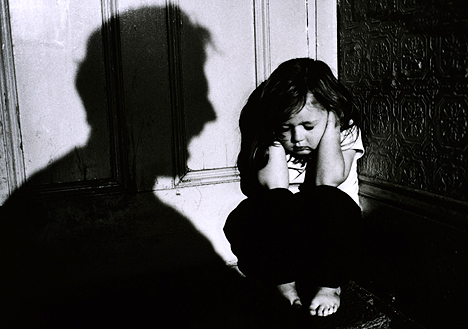Lesson 4: Child Abuse
Attention

Learning Outcomes
Upon completion of this lesson's material, students will be able to:
- Relate the ability to dissociate during trauma with long-lasting problems later in life.
Teaching
- Read "Chapter 5: Child Abuse" in Trauma and Recovery
This app, called Child Abuse Information, contains a lot of information about Child Abuse including: What IS Child Abuse?
In addition, we found an app that helps you assess a child abuse situation called Child Protector. These are both resources that you can use through your career.
|
Reading about child abuse can be disturbing but there are many individuals in our communities who have experienced abuse at some point in their lives. Every year more than 3 million reports of child abuse are made in the United States involving more than 6 million children. Individuals who reported six or more adverse childhood experiences had an average life expectancy two decads shorter than those who reported none There are multiple medical conditions, that present later in life, that are tied to child abuse. In one study, 80% of 21 year olds who reported having experienced childhood abuse met the criteria for at least one psychological disorder
There is a series of books written by Dave Pelzer about his journey of living in an abusive home, his journey in foster care, his resilience and ability to overcome a diffcult start. The books are called "A Child Called It", "The Lost Boy", and "A Man Called Dave". You can download free samples (the 1st chapters) of "A Child Called It", "The Lost Boy", and "A Man Called Dave", all written by Dave Pelzer, on iBooks. You can also choose to purchase any of the books through iBooks or Kindle for additional reading. Information from these books can be integrated into your discussion and quiz responses.
There is a long history in Psychology exploring how people survive instances of trauma, including child abuse. While many of his ideas are outdated, Freud introduced us to the concept of "Defense Mechanisms". These mechanisms allow the psyche (our internal self) to protect itself from the stress and anxiety of the "real world". Below you will find a slideshow regarding a selection of these defenses. We all experience situations in our lives that result in our use of defense mechanisms. Just like with all emotions there is a range of defense mechanisms. They can be within a normal range as part of our interpersonal interactions. They can also be more present, where they begin to interfer with our usual communications with others. Their presence can enter a distressing range when they are frequently (or ever) present and interfer daily with one's ability to communicate with significant others, colleagues and friends.
There are two categories of defense mechanisms: primitive and mature. There is also a grouping in between, labeled less primitive, more mature. The more primitive a defense mechanism, the more it may interfer with an individual's long-term interactions. Though primative defense mechanisms tend to be used as an effective short-term response type. Most are fairly unconscious responses - we don't even realize we are using them. Our work with clients in the future could include helping the clients to improve their communication styles. Some clients depend on various defense mechanisms due to their prior experiences.
Click HERE to view the Defense Mechanisms Slideshow
Assessment
Possible Class Discussion
In this chapter we are introduced to a couple of "Doubles"...Doublethink and Double-Self. Integrate this information into your conception of the dissociative ability that was discussed earlier in the book. How does this double-ness contribute to long lasting problems? If you have ever read the Dave Pelzer story ("A Child Called It", "The Lost Boy", and "A Man Called Dave") you may integrate this into your responses.
For more information on Dave Pelzer click HERE.
Lesson 4 Quiz
Answer the following questions in the designated quiz:
1. We all use defense mechanisms as part of our communications styles. Awareness of their presence and how they can interfer with successful communication is important. Please identify two defense mechanisms you have used in the past and share how their use may have impacted the interaction, conversation, or situation.
2. Please respond to this scenario: A family members reports to you that they are concerned that the woman who lives next door may be abusing her children. Using the information you gained from the two apps above, how would you explain the signs and symptoms of abuse, the next steps to take and resources for your family member?


